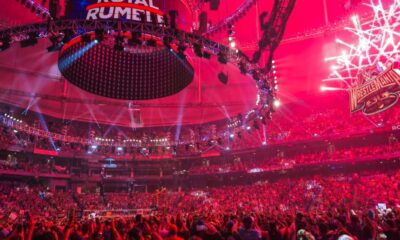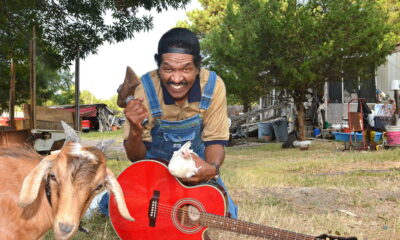Create
Wildlife in art gains a new perspective at the James
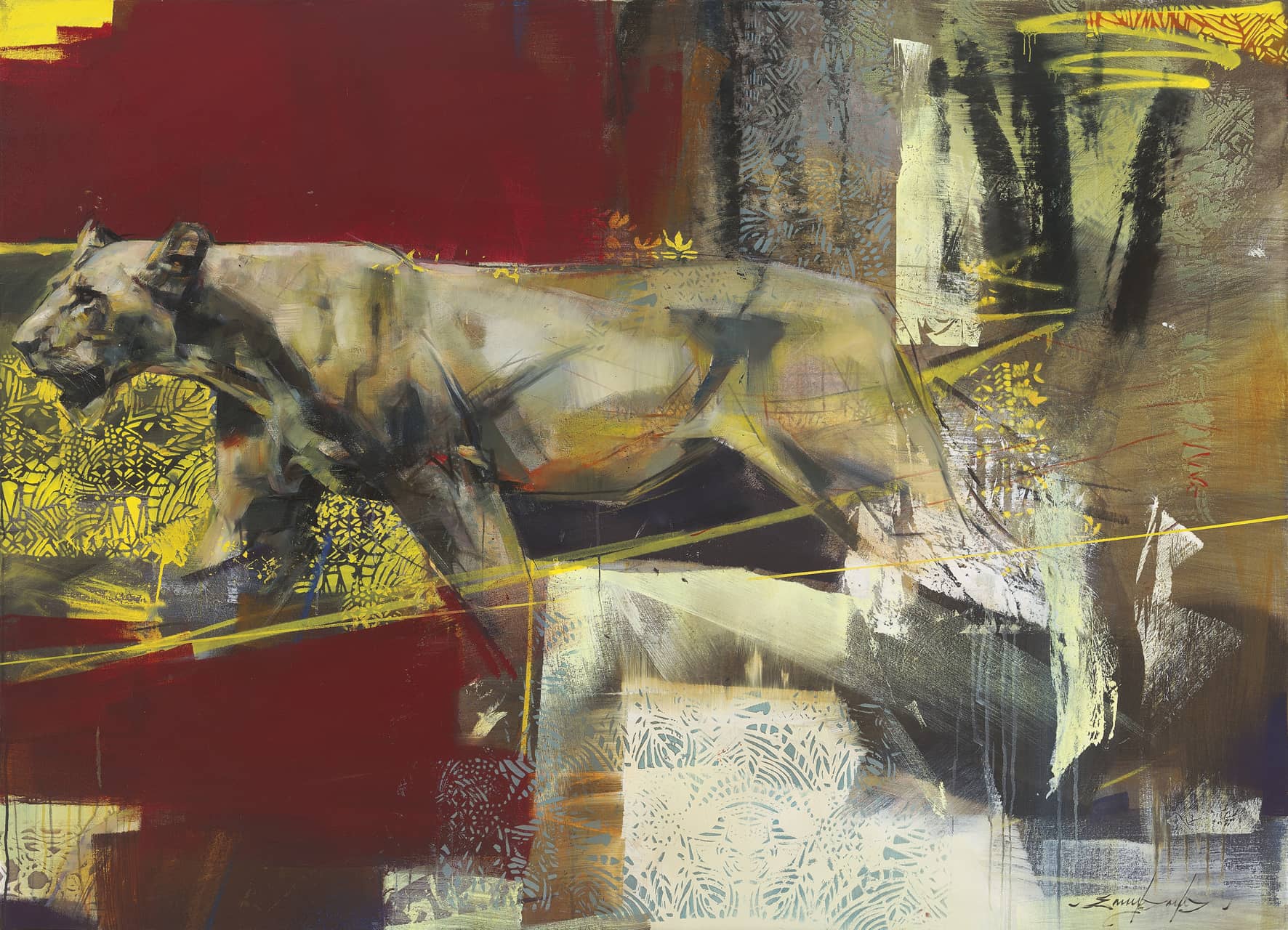
In an upstairs gallery at the James Museum of Art, curator Emily Kapes is standing next to a life-sized horse. Pegasus, artist Paul Villinski’s 2016 sculpture of the mythological equine, is made of found wood scraps. Instead of wings, he is surrounded by (and presumably flown by) white butterflies. They’re made from aluminum beer cans.
Pegasus, offers Kapes, is a comment on recycling. “Beer cans can be turned into butterflies,” she marvels. “There’s a transformation that can happen. And I think the white butterflies against the dark-colored wood have such a great contrast – and has a delicacy that really lifts it. It’s an uplifting piece, and optimistic, where good can come out of something not-so-good.”
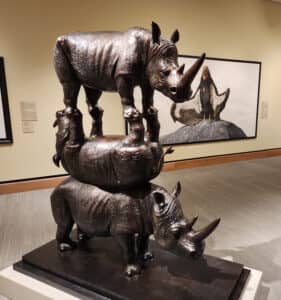
Gillie and Marc, The Last Three Stood Proud and Tall. Gallery photo by Bill DeYoung.
The sculpture is part of Un-Natural Selection: Wildlife in Contemporary Art, opening Saturday at the James. On loan from the National Museum of Wildlife Art, in Jackson, Wyoming, it’s a collection of works in various media that present a modern alternative to Darwin’s theory of natural selection.
The art “considers the diverse ways contemporary artists use animal imagery to address humanity’s interconnectedness with the natural world,” according to the museum’s official description.
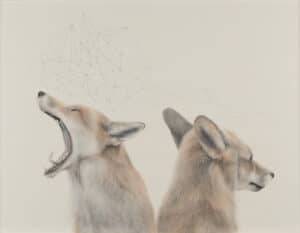
JenMarie Zeleznak (United States, b. 1984). Constant Cycles Strung Together, 2014. Watercolor and graphite pencil on paper. 35 × 44 1/4 inches. Gift of the 2015 Blacktail Gala, National Museum of Wildlife Art
Translation? According to Kapes, “Wildlife art is just not the same as it was a few decades ago. People are really pushing the envelope in terms of, ‘how can we put messages in our art about the environment, and human interaction with nature?’”
Hence Pegasus, and hence The Last Three Stood Proud and Tall, a bronze work by sculptors Gillie and Marc Schattner. This one whimsically depicts the last three white rhinos in existence, and its creation helped lead to a ban of trafficking in rhino horns in several countries.
The lone male of the three died shortly after the cast for the sculpture was made.
The digital media projection Animal Land depicts spectral, silent, ghostlike videos of a Mexican wolf, a jaguar and a mountain line, animals displaced in some way by the spread of urban sprawl. Artists Lauren Strohacker and Kendra Sollars created the haunting piece in 2019.
There are several other uniquely digital interpretations:
Abject realism in wildlife art, Kapes points out, only became about many years after the dawn of human civilization. “When we think of very early depictions of animals, say in caves, they’re somewhat realistic – but they didn’t start out that way.”
Un-Natural Selection will be on view through Sept. 17.
“Partnering with the wildlife art Museum,” Kapes says, “is definitely a big deal” for the James Museum, which recently celebrated its fifth anniversary. “It helps us get our name out there. They just celebrated 35 years, so even by museum standards they’re on the young side.
“We’ve had great interactions with them so far, and we plan to borrow another exhibition that they’ve organized next year.”
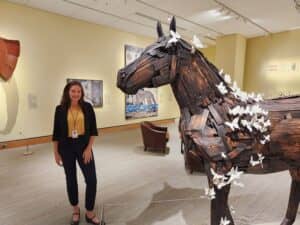
Emily Kapes and Pegasus. Photo by Bill DeYoung.


